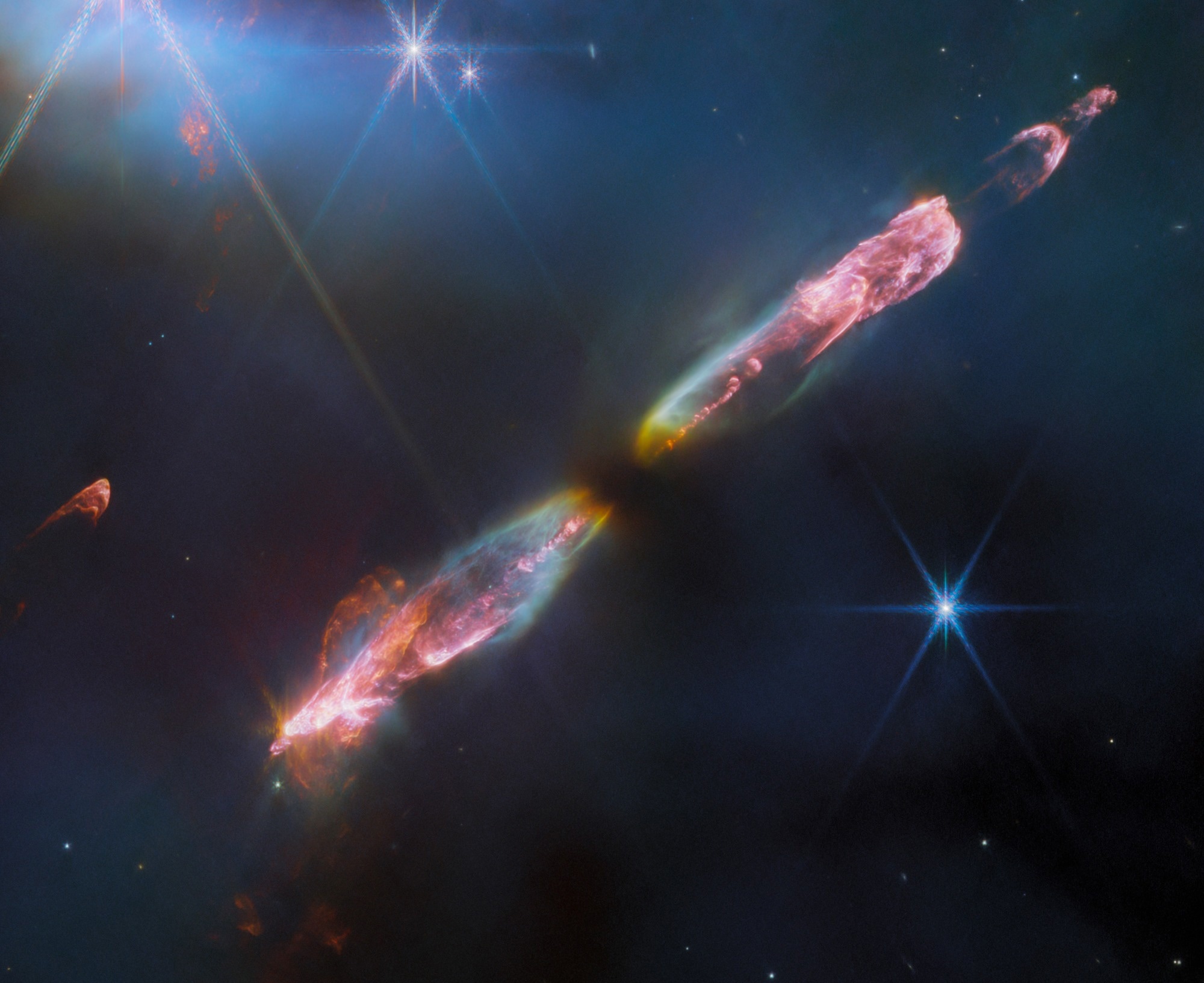When stellar winds or gas jets emitted by young stars collide with neighboring gas and dust at high speeds, they create Herbig-Haro (HH) objects, which are bright areas around young stars. A Class 0 protostar, an infantile counterpart to the Sun when it was just a few tens of thousands of years old and with a mass of about 8% of the present-day Sun (it will ultimately evolve into a star like the Sun), is shown in this view of the galaxy HH 211 taken by NASA’s James Webb Space Telescope.

NASA’s James Webb Space Telescope’s high resolution, near-infrared look at Herbig-Haro 211 reveals exquisite detail of the outflow of a young star, an infantile analogue of our Sun. Herbig-Haro objects are formed when stellar winds or jets of gas spewing from newborn stars form shock waves colliding with nearby gas and dust at high speeds. The image showcases a series of bow shocks to the southeast (lower-left) and northwest (upper-right) as well as the narrow bipolar jet that powers them in unprecedented detail. Molecules excited by the turbulent conditions, including molecular hydrogen, carbon monoxide and silicon monoxide, emit infrared light, collected by Webb, that map out the structure of the outflows. Image Credit: ESA/Webb, NASA, CSA, T. Ray (Dublin Institute for Advanced Studies)
Due to the fact that newly created stars are almost always still trapped in the gas from the molecular cloud in which they originated, infrared imaging is extremely useful for studying young stars and their outflows.
A Herbig-Haro object like HH 211 is perfect for study with Webb’s sensitive infrared cameras since the star’s outflows’ infrared radiation can pass through the obstructing gas and dust. Webb can gather the infrared light emitted by molecules like silicon monoxide, carbon monoxide, and hydrogen monoxide that are stimulated by turbulence to map out the structure of the outflows.
The image depicts a sequence of bow shocks to the southeast (lower left) and northwest (upper right), as well as the narrow bipolar jet that drives them. Webb captures this sight in extraordinary detail, with 5 to 10 times the spatial resolution of previous HH 211 images.
On either side of the center protostar, the inner jet is seen to “wiggle” with mirror symmetry. This is consistent with findings at smaller scales, implying that the protostar is an unresolved binary star.
Early observations of HH 211 using ground-based telescopes showed massive bow shocks traveling northwest and southeast, cavity-like structures in shocked hydrogen and carbon monoxide, a tangled and wriggling bipolar jet in silicon monoxide, and giant shocks in both directions in shocked hydrogen.
The outflow of this object is somewhat sluggish when compared to similar outflows from more advanced protostars, according to Webb’s recent measurements.
The researchers determined that the fastest outflow structures were moving at speeds of around 48 to 60 miles per second (80 to 100 kilometers per second). However, there is a significantly lower velocity differential between these portions of the outflow and the shockwaves that they are hitting with.
The scientists came to the conclusion that molecules make up the majority of outflows from the youngest stars, like the one in the core of HH 211, because the relatively low shock wave velocities are insufficiently energetic to disintegrate the molecules into simpler atoms and ions.